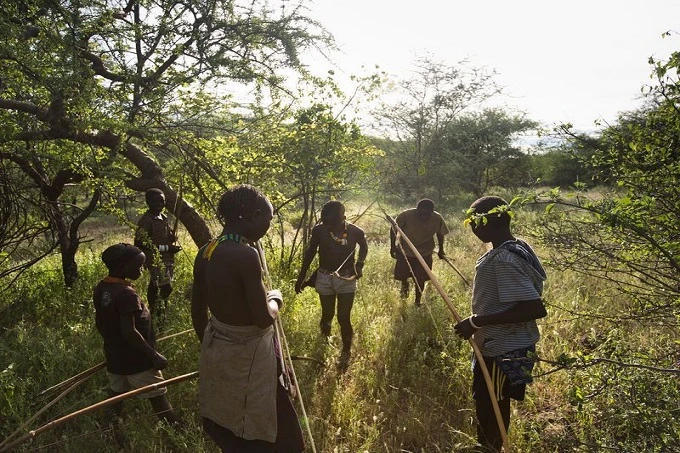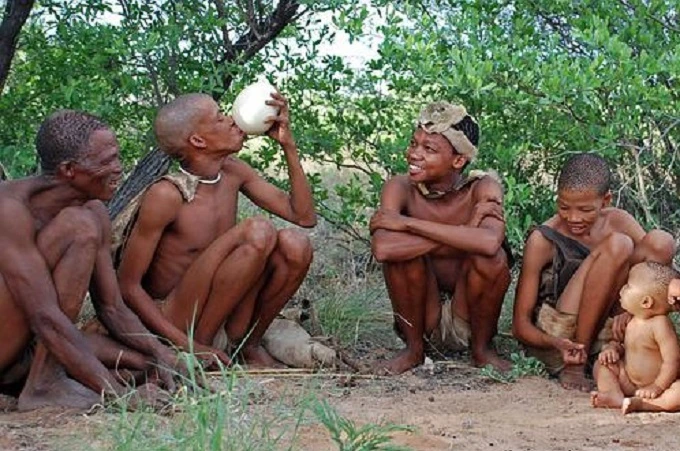What was life like for our ancestors in a hunter-gatherer society?

Humanity began its existence as nomadic tribes who were looking for any food on a large territory. The era of hunter-gatherers of our distant ancestors laid the foundations of modern civilization.
We know a lot about those people from a historical point of view. But how did they see the world, and how did they spend their days? This is a very interesting question, which is definitely worth attention.
Childhood was really childhood
It seems to us that only at the end of the twentieth century did children begin to be treated more leniently, to give them the freedom to enjoy this carefree time. However, judging by research, our ancestors treated their children better than modern parents.
Research shows that parents in hunter-gatherer societies emphasized warmth and affection rather than obedience and responsibility.
Children in hunter-gatherer societies had fewer household responsibilities than in subsequent societies and spent a lot of time playing and exploring the world. These games often imitated adult activities: hunting, gathering, cooking and caring for children. In general, the children’s life was an alternation of fun games and something like labour lessons, where boys learned to make, and girls learned to sew and cook.
There was no need to fear violence and wars

It is often possible to hear the phrase that people’s craving for war was laid down in ancient times, and it is not our society that is to blame, but the ancient instincts leading to violence. However, looking at the studies of hunter-gatherer societies, it turns out this is far from the case. Studies have shown that hunter-gatherers were less likely to fight and engage in other types of violence than later generations of sedentary descendants who produced food on the spot.
The thing is that hunter-gatherer societies were less vulnerable to food shortages and hunger. And it was this that laid the foundation for the first military conflicts when one civilization ran out of food and had to take it away from its neighbours.
People lived in social equality
Today we divide the world into men and women, rich and poor, young and old, and so on. But there was no such division in hunter-gatherer society, at least from a position of strength. For example, women had an equal position with men, which they lost with transitioning to a sedentary lifestyle and regained only in the twentieth century.
A typical man’s day consisted of hunting animals or fishing, while women gathered fruits, vegetables, nuts and other plant products. And although meat is much more high-calorie and satisfying food than plant food, nevertheless, according to scientists, the work of women brought more products to the tribe because plants simply did not run away and did not fight back. Regarding efficiency, both men and women brought the same benefit to the community.
The diet was varied

Again, because of popular culture, we believe that ancient people ate almost one raw meat and some apples accidentally found on the way to hunt. In fact, after studying the sites of hunter-gatherers and their remains, scientists concluded that the diet of our ancestors did not differ much from ours. They cooked food the same way and added various herbs and spices, improving the dishes’ taste. No one forbade hunter-gatherers to experiment with mixing ingredients, which led to the appearance of first courses in the modern sense of the word.
The diet varied depending on the dwelling place. At one time, it could consist of a mixture of meat and vegetables, and at another — of fish, fruits and nuts, but in general, it was quite diverse.
Do not stay in one place for a long time
Hunter-gatherers led a nomadic lifestyle, moving from place to place whenever food ran out within a certain radius. This does not mean that they travelled thousands of kilometres from one place to another; they just chose a certain route. Later, for example, in a year, they could return to the original parking lot, where food resources had time to recover. Scientists have calculated that the hunter-gatherer tribe, depending on the number, had enough radius from 20 to 1,300 square kilometers to feed themselves.
However, there were exceptions when the tribes lived in the same village, built near a place rich in food resources, for example, by rivers, seas or forests permanently. They remained hunter-gatherers, but they did not need long marches for food.
People lived quite a long life
It is generally believed that people used to live up to 20-30 years old, and what we consider youth today was almost old age for ancient ancestors. This is a misconception that came out of a misunderstanding of the term “average life expectancy”.
Hunter-gatherers had an average life expectancy of 40 years. But this does not mean that only a few reached this age. This is only an average figure, which consists of the age of the majority of society’s representatives and centenarians and infants. And since, according to research, infant mortality among hunter-gatherers was more than 30 times higher than in the modern Western world, and infant mortality at an early age was more than 100 times, this led to a decrease in the value of average life expectancy.
Yes, modern people, thanks to medicine, have begun to live longer, but not as significant as we imagine. Life expectancy is increasing, first of all, due to a decrease in infant and child mortality, and not because we have more centenarians.
Having studied modern societies of hunter-gatherers who practically have no contact with the outside world and do not receive medical care, scientists have found that, for example, the Tsimane Indians have a life expectancy of 78 years, which is more than the population of many, not the most backward countries.
The size of the communities was small

When we imagine ancient people, we think they hunted mammoths or other game by the dozens and could easily afford to lose a couple of warriors to get food. Our ancestors usually lived in groups of 10-12 adults plus children.
At the same time, in the nearest district, there could be about 50-100 adult men and women belonging to the same genus and divided into small clans for the convenience of food extraction. Such an understanding that there will always be a relative nearby who is ready to help in a difficult moment made life easier for our ancestors.
Religion occupied an important place in life
Scientists believe that religion, as we know it today, did not exist in hunter-gatherer societies. Their beliefs varied from tribe to tribe and were represented mainly by nature worship. This determined a more respectful attitude toward the outside world than the sedentary ancestors. And since the knowledge base was minimal at that time, any action and event, from rain to animal migration, was given mystical significance.
In any tribe, there was a shaman, priest, oracle, or any other representative of the clergy, who was the most respected member of the tribe, and at the same time, a kind of encyclopedia, which included knowledge about healing, and laws, military art and so on.





C’était bien plus compliqué avant ,aujourd’hui avec les avancées qui nous rendent la vie plus facile c’est mieux . Mais il faut noter qu’il y avait moins de maladies bizarres à cette époque là